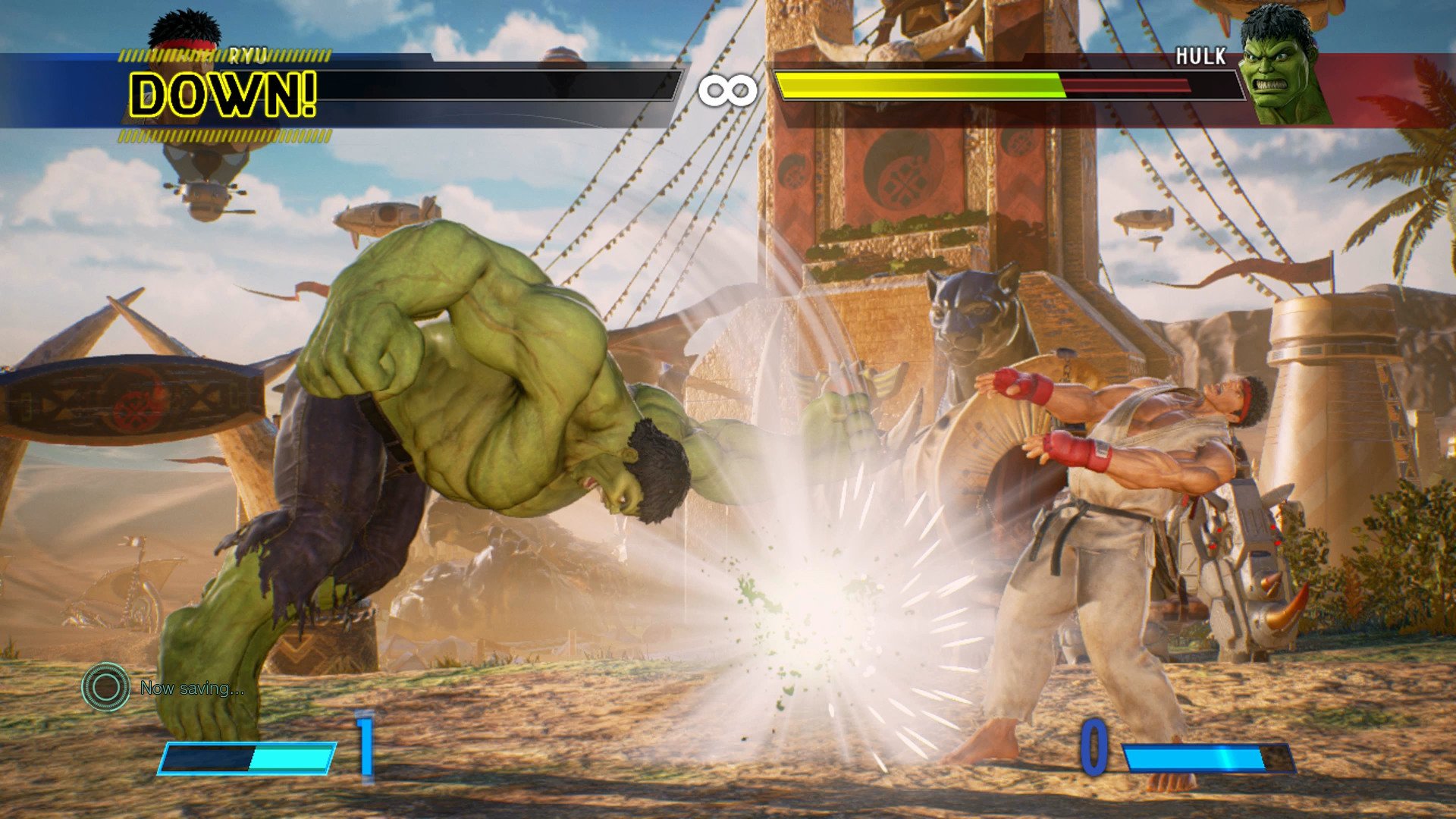Six years after the last game in the series, the all-new Marvel vs. Capcom: Infinite has arrived on Xbox One. With the series' most extensive story mode, a roster of 30 mostly beloved characters, and a streamlined fighting system. But an oddly low budget feel threatens to lessen the game's impact.
Two worlds, one roster of fighters
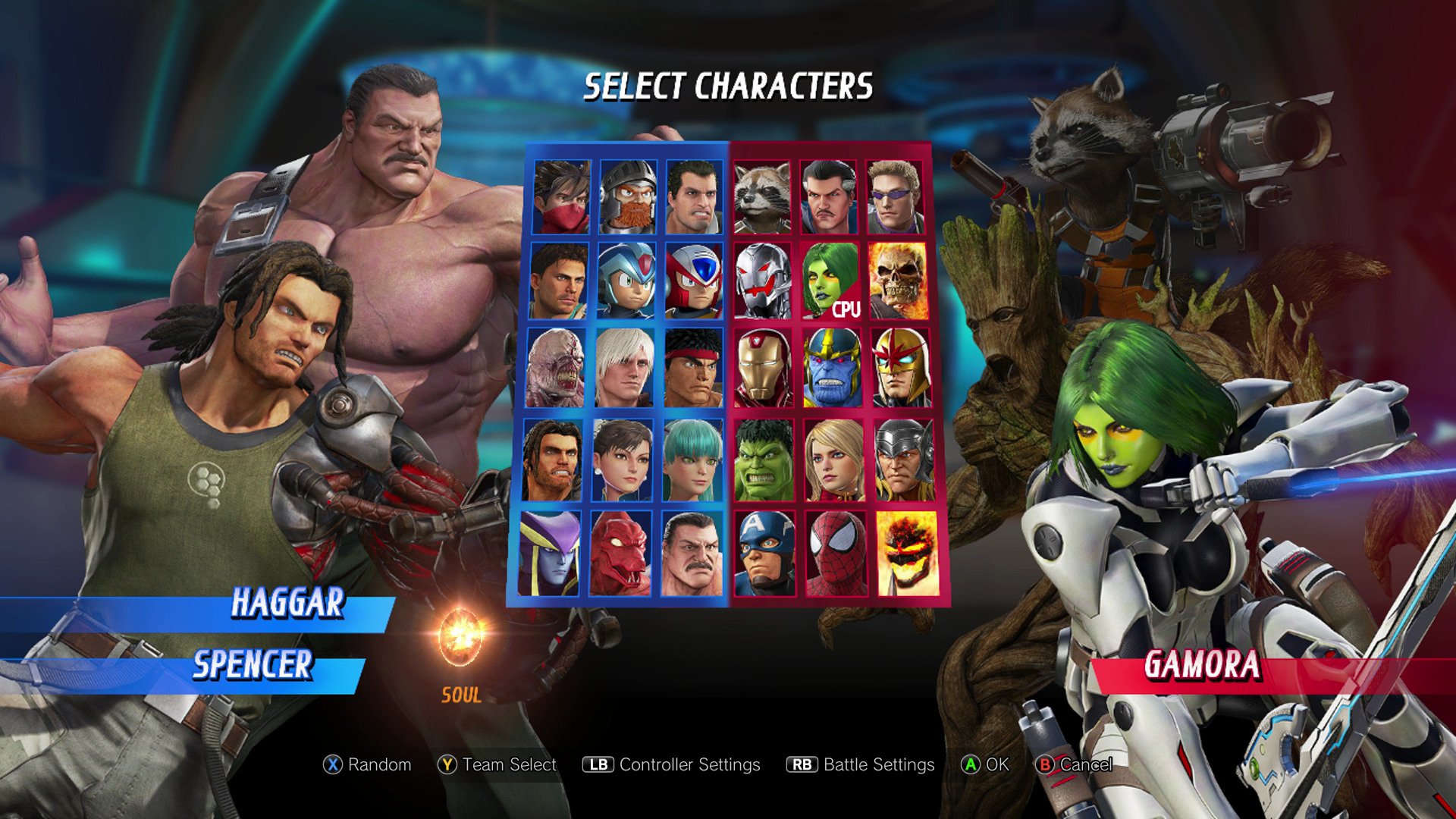
In the distant year 1996, Capcom crossed-over its beloved Marvel fighting games with Capcom-owned characters for the first time in X-Men vs. Street Fighter. Soon, the crossovers expanded with 1998's Marvel vs. Capcom. The last game in the series, Ultimate Marvel vs. Capcom 3, launched in 2011 and even arrived on Xbox One earlier this year.
Whereas Ultimate MvC3 was an upgraded version of a previous title that boasted a whopping 50 characters, the latest sequel Marvel vs. Capcom: Infinite necessarily starts out with a smaller roster of 30 characters that will grow over time thanks to planned DLC releases. The quality of the new lineup is a subject of some debate, and it does suffer from the inclusion of only four female characters in the main roster. That issue aside, I actually quite like the lineup.
On the Capcom side, only two Street Fighter characters make the cut this time: Ryu and Chun-Li. Mega Man spin-off Mega Man X makes his first appearance in the series. He's also joined by his friend Zero, who has appeared in past games. The other new Capcom character is Jedah Dohma, a lanky demonic boss from the Darkstalkers series. His compatriot Morrigan the succubus returns as well.
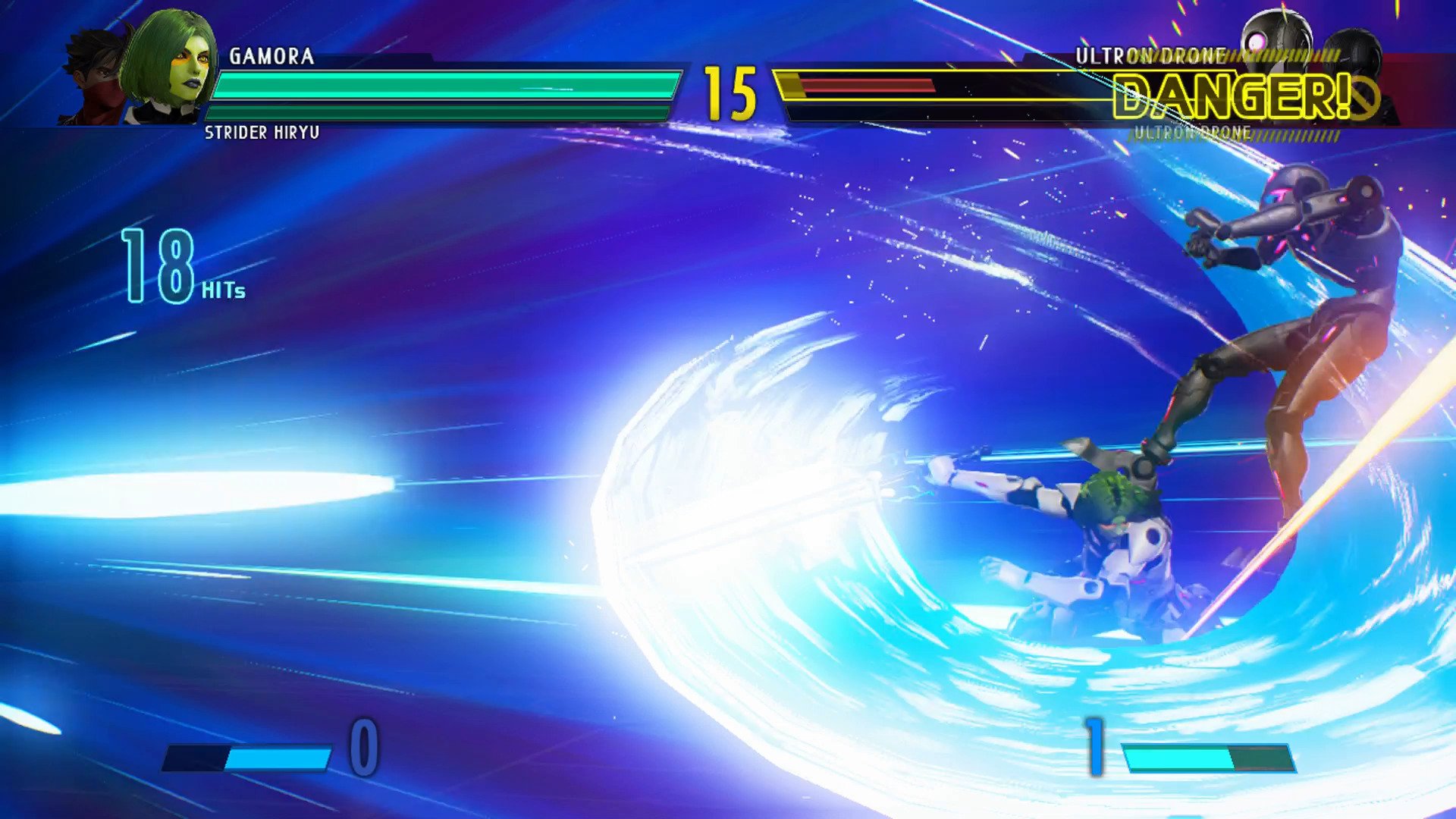
As for Marvel characters, Avengers Captain America, Iron Man, Thor, Hulk, and Hawkeye return once again. They are joined by badass female Captain Marvel (who has her own movie coming in 2019), villainous robot Ultron, and Gamora, the green-skinned female assassin. Her fellow Guardians of the Galaxy member Rocket Raccoon (who calls on Groot for assist moves) comes back from the previous game.
Gameplay

Marvel vs. Capcom 3 has been criticized for its overly complex gameplay, with multiple styles of meters and moves and three characters per team to manage. Infinite fixes things up by going back to two-fighter teams and one main meter: the Infinite meter. This powers super moves and pretty much every other technical thing you'll need to do. There are some welcome new moves such as the ability to push an opponent away while blocking and to swap out characters while blocking.
Another plus for me is the face buttons have reverted to the standard two-punches and two-kicks setup of Marvel vs. Capcom 2. You don't get a launcher button anymore, but who cares? Just duck and press high punch to launch enemies into the air, as the fighting gods intended.
All the latest news, reviews, and guides for Windows and Xbox diehards.
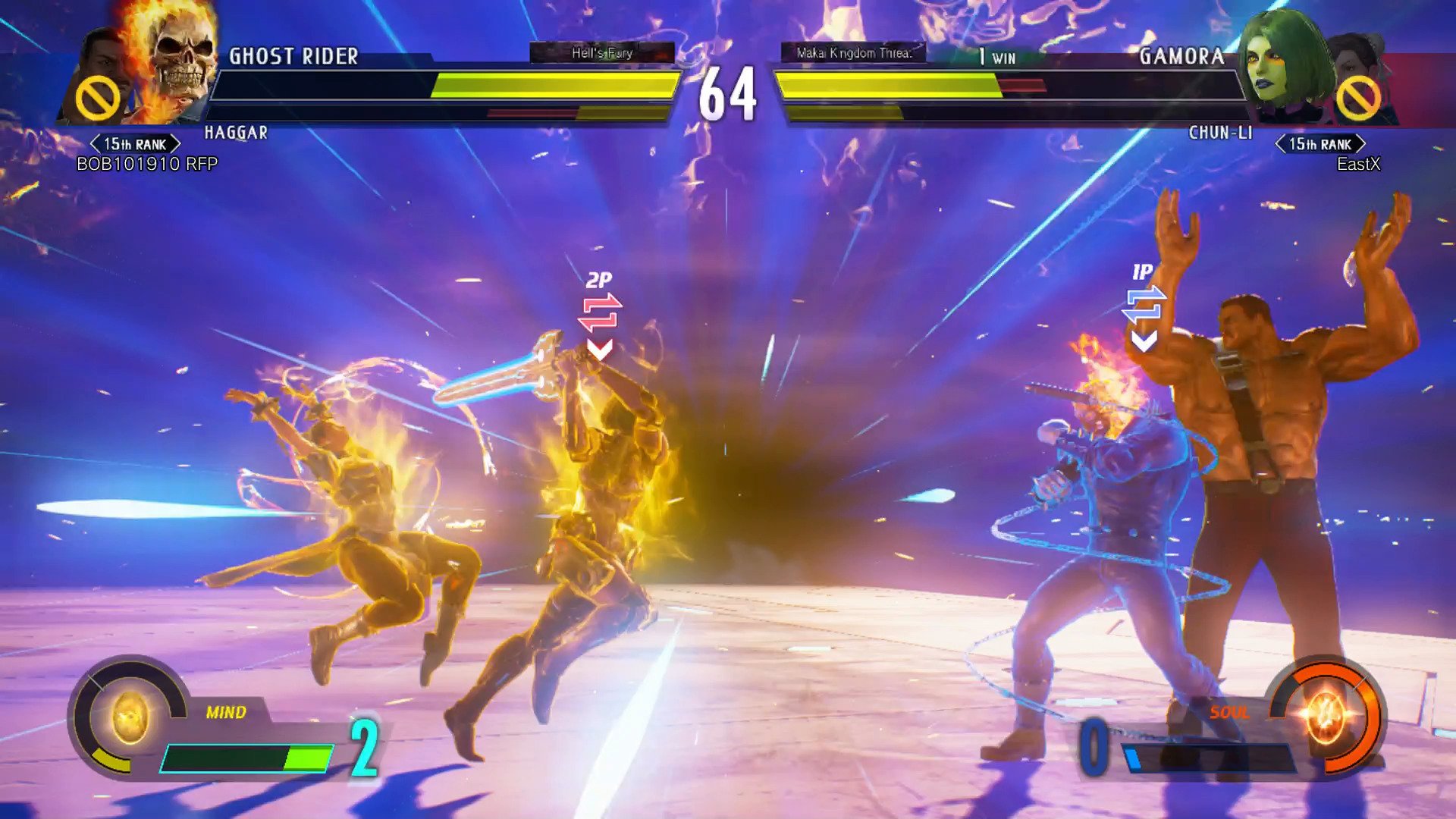
A deep new mechanic that doesn't overstay its welcome is that of the Infinity Stones. Before each match, players get to choose from all six gems. Each one provides a different effect when used and its own ultimate effect as well. These can box your opponent into a confined space, pull them towards you, fire homing projectiles at them, and more. Infinity Stones are a great way to capitalize on the marvel universe, and they keep fights fresh even when similar teams go up against each other.
Introducing Story mode
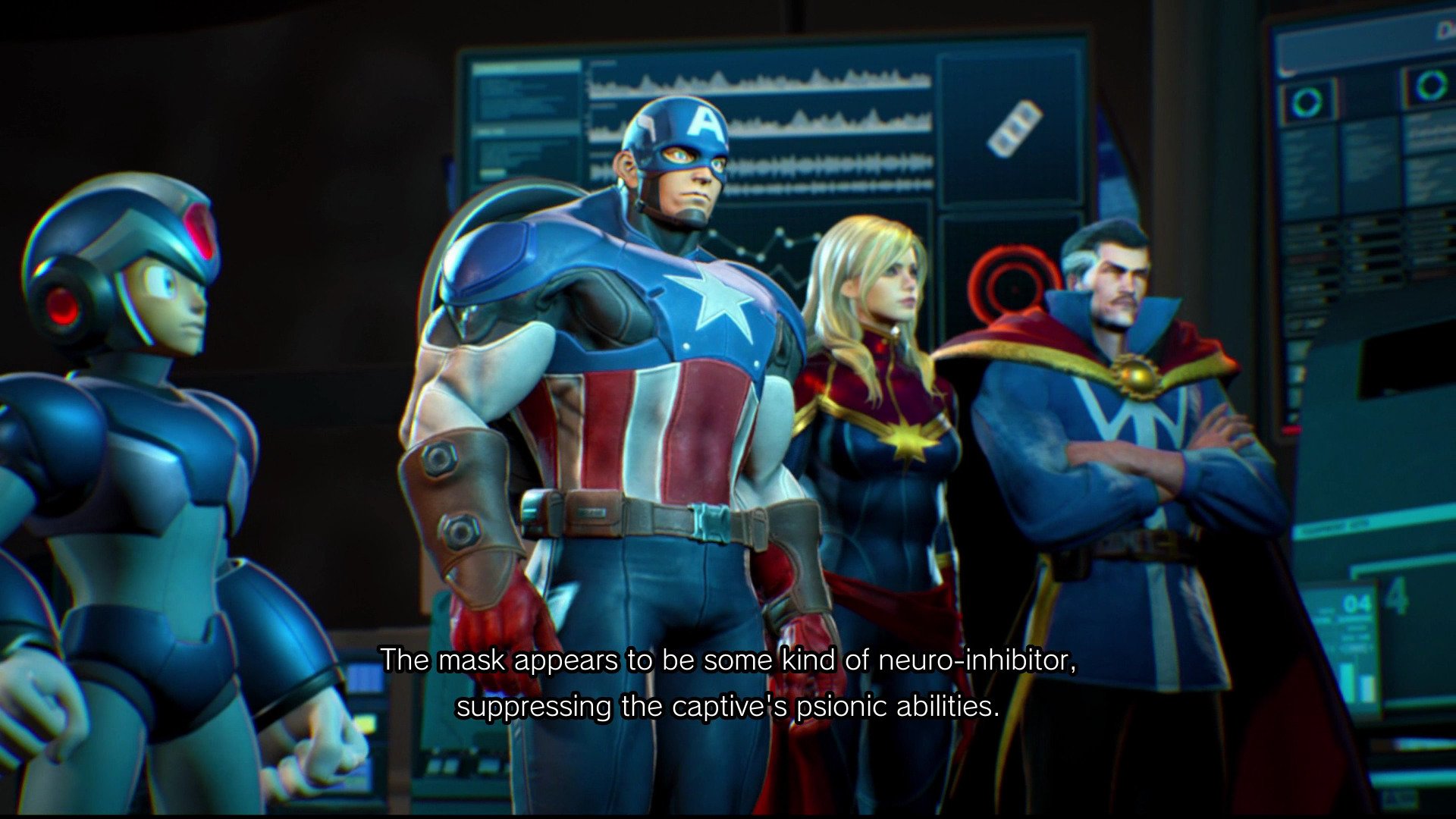
Story mode, a first for this series, opens a bit weakly with narration from the game's semi-original main villain Ultron Sigma. A combination of Marvel's Ultron and Capcom's Sigma, the two robotic fiends from separate universes have merged into one malevolent being. Their mission is to eliminate or control all organic life. The control element comes from the Sigma virus, which basically turns living beings into Ultron drones.
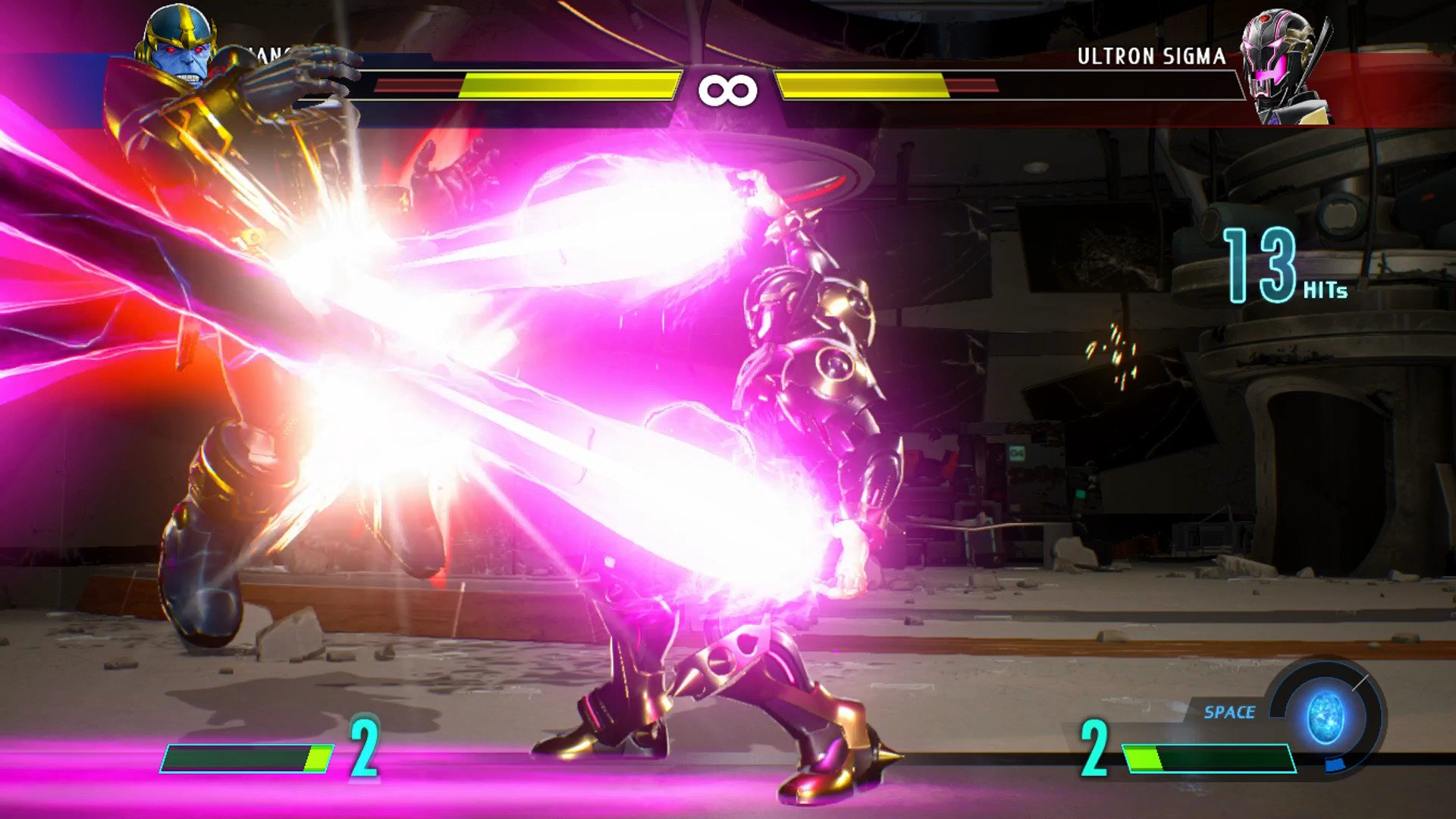
We witness most of the heroes being handily outclassed by Ultron Sigma thanks to his possession of two of the Infinity Stones – the powerful gems capable of controlling time and space itself. To have any hope of saving their universes, our motley assortment of heroes must capture some Infinity Stones of their own before it's too late.
Interestingly, the theme of combined universes exemplified by Ultron Sigma also applies to the locations themselves in this installment. Nearly every stage takes place in a weird hybrid Marvel-Capcom location, such as XGard, Knowmoon, the A.I.M.Brella headquarters, and more. It's an economical use of the two universes, but Valkanda and Xgard just aren't as cool as Wakanda and Asgard.
Story mode structure and issues
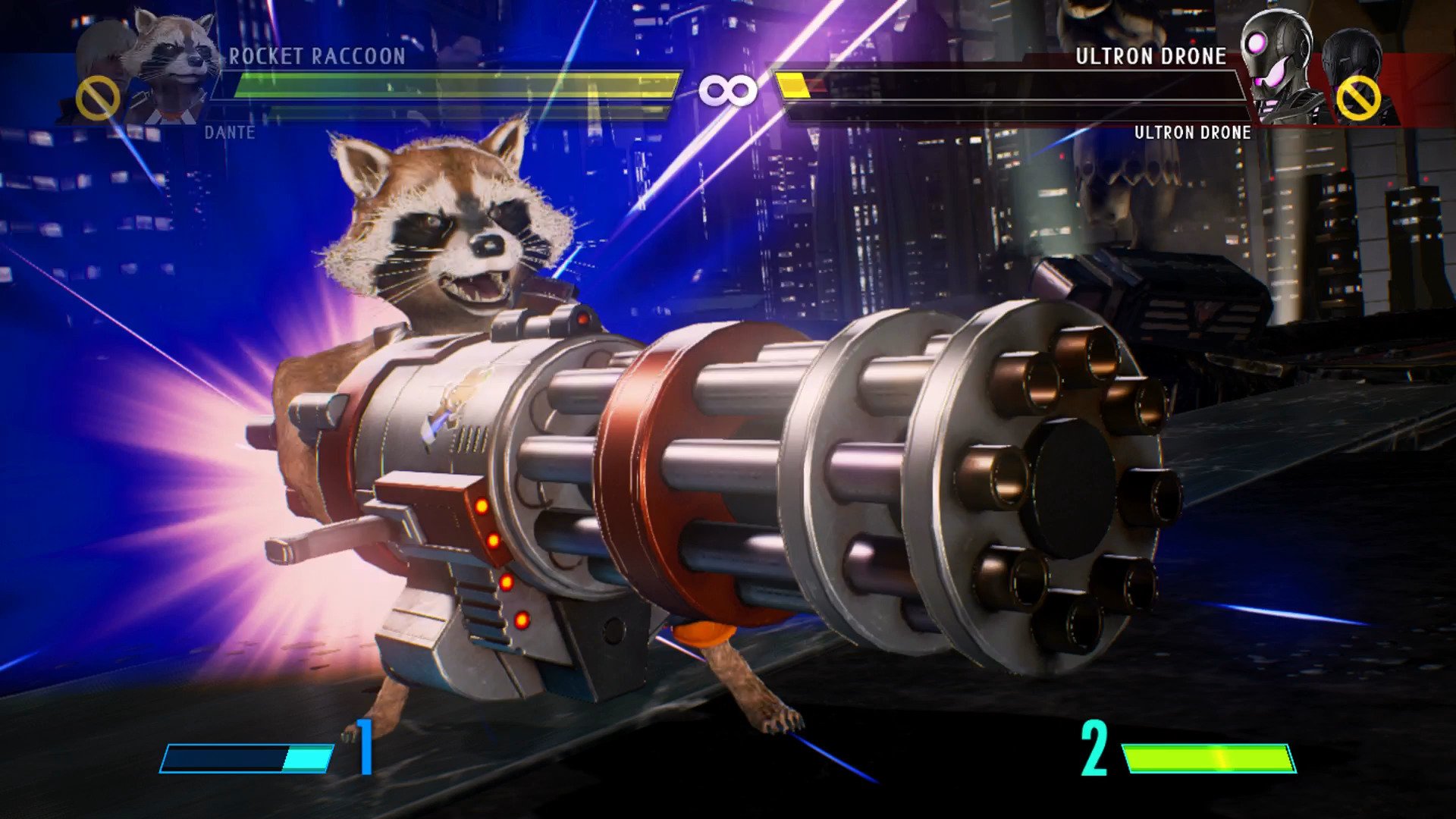
The way story mode works is a short fully animated and voiced cinematic plays out and then players engage in a fight. Win the fight and the next cinematic plays, and so on. The story itself is decently interesting, though it can't hold a candle to the writing in NetherRealm's Injustice 2. But the structure has problems.
For one, you have to deal with 20-30 seconds of loading from the end of a story segment to the fight. When fights only last about a minute, that's too much loading for the interactivity you get. Some fights have mechanics like having to defeat a certain number of drones (Tekken 7 or survive for a set period of time. But for the most part, they're just over so fast that they feel inconsequential. Bumping the fights up to two rounds instead of just one would make them more satisfying.
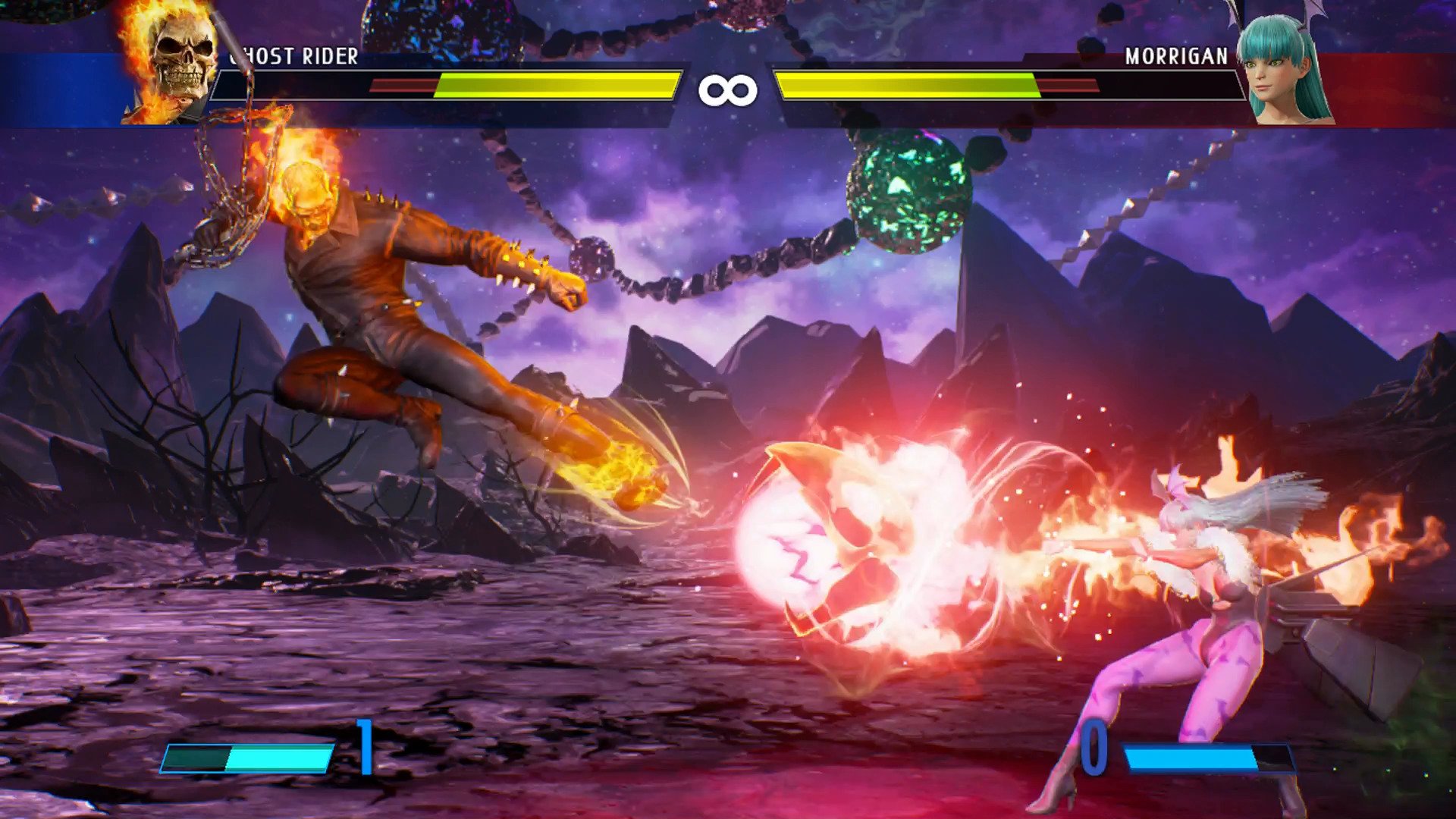
Besides, it's hard to feel a sense of progress because there's no hub or map of any kind. You can't jump back into old fights or see upcoming fights. Infinite's story mode just goes straight from cinema to fight to back again, with nothing else holding the experience together. At least give us a hub or something so we can tell how far along we are. The whole thing only lasts four hours or so, but I still like to know where I am in a game prior to finishing it.
Arcade and Mission modes
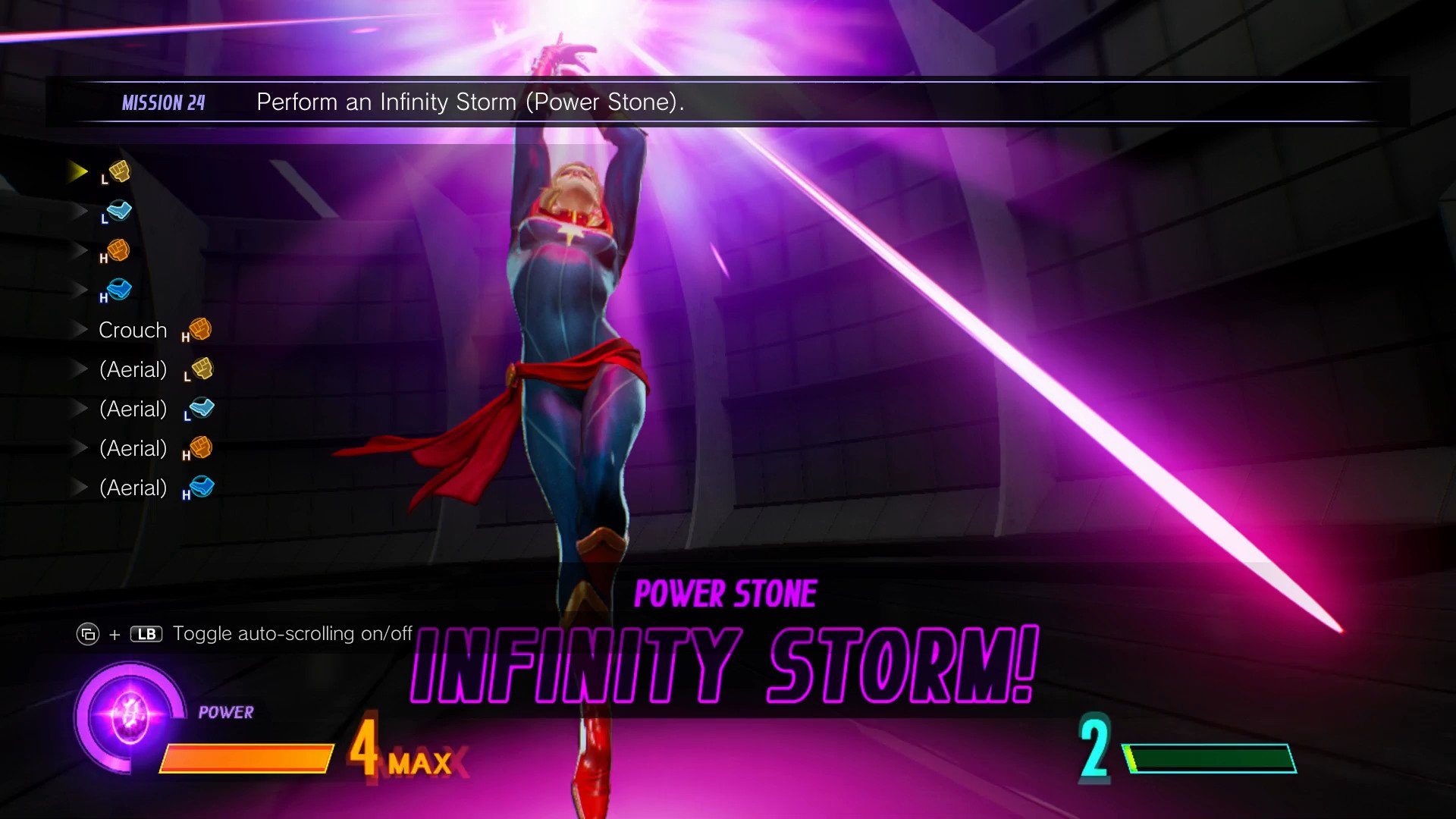
In addition to story mode, Infinite features single-player Arcade and Mission modes. Keeping in mind that Street Fighter V launched without even an arcade mode, Infinite certainly shows that Capcom learned a lesson. Arcade is simply a series of seven battles followed by a character-specific ending, just like you'd expect.
When you lose a fight in Arcade or Story, you get the option of dropping the difficulty down to make the battle more doable. You can also choose to accept online challenges during arcade mode. That's always a welcome feature, as players can be entertained by single-player content while waiting for a match against another human being.
Marvel vs. Capcom 3's lackluster mission mode is back too. Mission mode is a haphazard training mode in which players complete general and character-specific tutorial challenges. They don't teach you any context though, and you're likely to forget everything after completing it. The missions get super tough after a while too, just like in the previous game.
Multiplayer
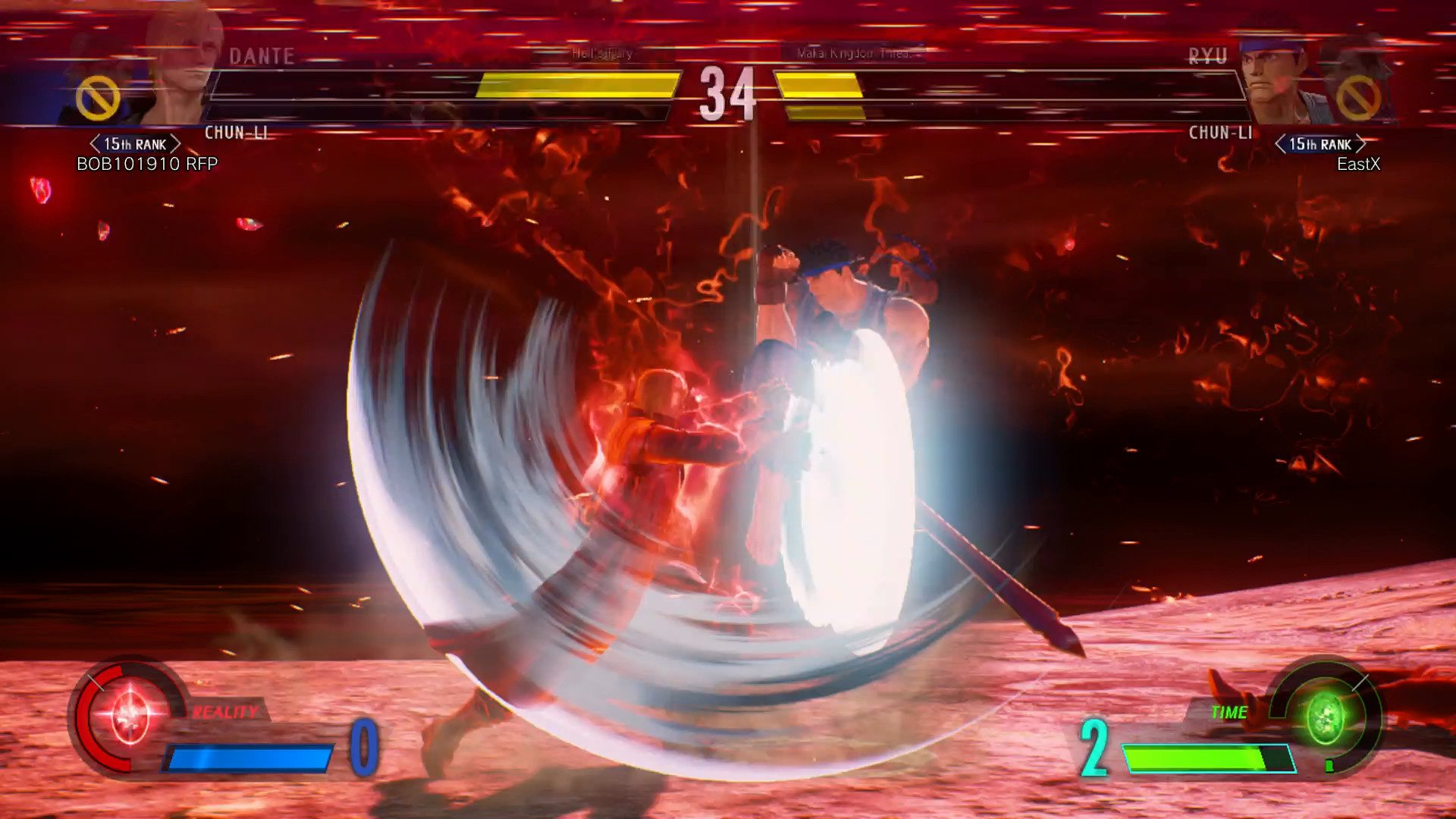
Infinite supports local and online battles for two players, just as you'd expect. In addition to ranked and casual matches, online features eight-player lobbies and a beginner's league queue. Lobbies are great for hanging out and playing with the same group of people.
The Beginner's League lets newcomers get matched specifically against other newcomers. Hopefully that will make online multiplayer more inviting to newbies – nobody likes to hop online for the first time and just get trounced by an expert player.
Overall impression
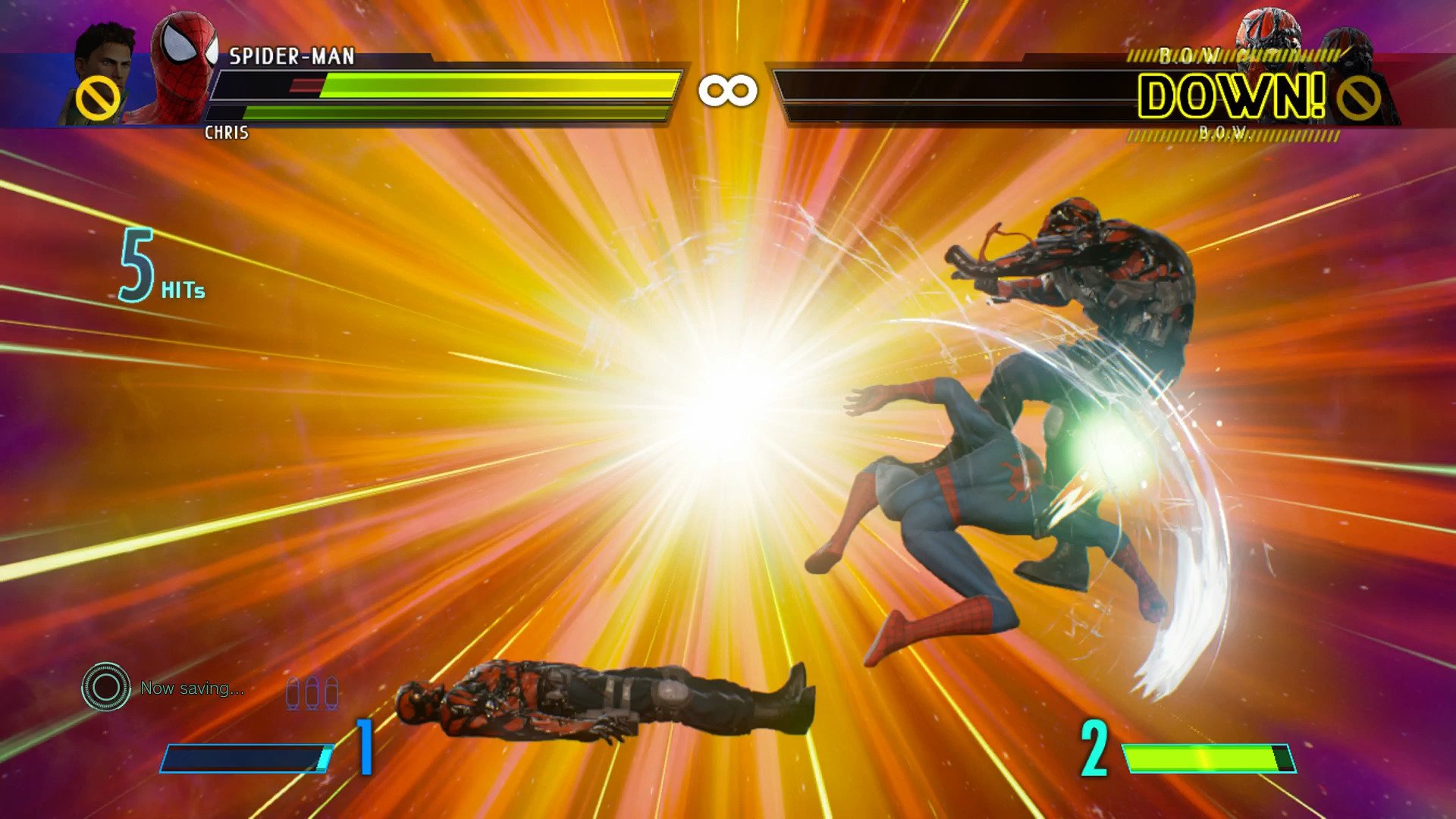
Marvel vs. Capcom: Infinite is a good game, but it feels low-budget and slightly undercooked. Visually, it suffers from a horrendous art style in which nearly every character looks off or hideous in some way. Poor Chun Li has a freakishly small head, and she's not the only one. Considering how good Marvel vs. Capcom 2 and 3 looked, it makes no sense for Capcom to choose such shoddy art direction for Infinite.
The amount of single-player content feels light too, compared against the robust packages offered by Injustice 2 and Mortal Kombat X. Perhaps we'll get a new mode as DLC eventually, as Marvel vs. Capcom 3 once did. Still, multiplayer is the final destination for most fighting games, and Infinite doesn't disappoint on that front. Good online options and genuinely fun gameplay mean that series fans will have plenty of incentive to keep fighting each other in the months to come.
Pros:
- 30 unique and often beloved characters battle it out one-on-one.
- The series' first full-length story mode pits heroes from both universes against one world-ending threat.
- Easier to learn and play than Marvel vs. Capcom 3.
Cons:
- The hideous art style makes nearly everyone look freakish and ugly.
- Story mode needs a better structure, and Mission mode is as uninspired as ever.
- Too few female fighters come to the party.
Marvel vs. Capcom: Infinite costs $59.99 on Xbox One, PlayStation 4, and Steam. Grab the $89.99 Deluxe Edition to get the game and Character Pass bundled together.
- See Standard Edition on the Xbox Store
- See Standard Edition on Amazon
- See Deluxe Edition on the Xbox Store
Xbox One review copy provided by the publisher.

Paul Acevedo was formerly a Games Editor at Windows Central. A lifelong gamer, he has written about videogames for over 15 years and reviewed over 350 games for our site. Follow him on Twitter @PaulRAcevedo. Don’t hate. Appreciate!
